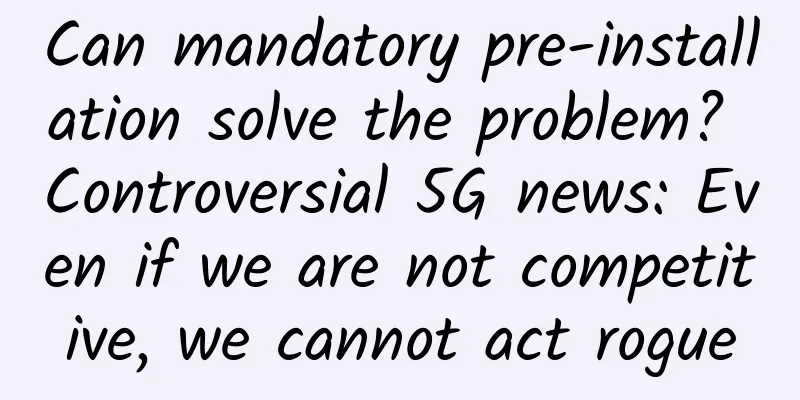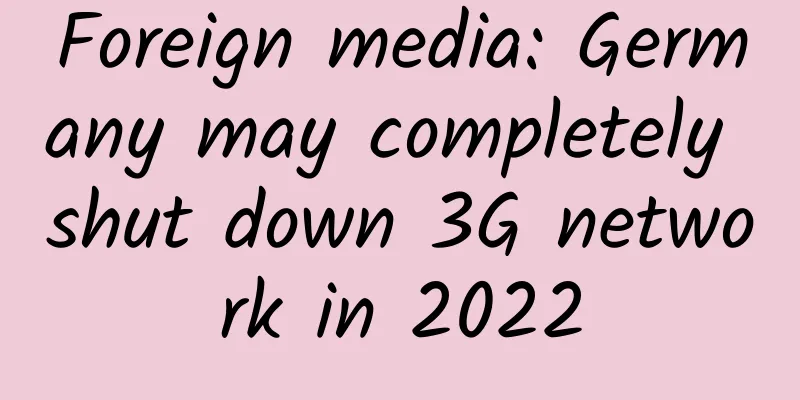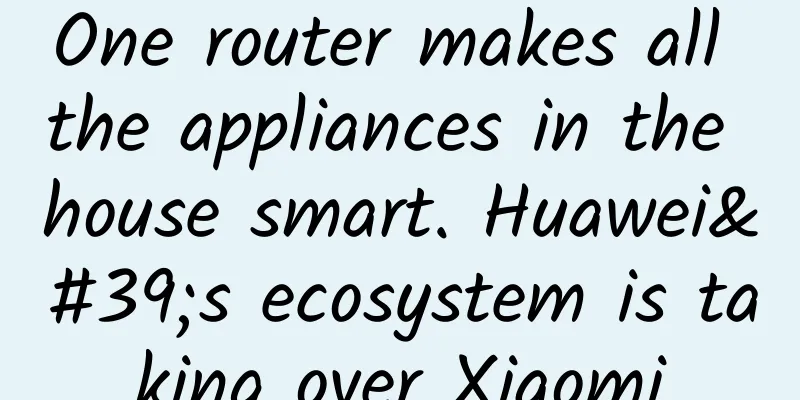Can mandatory pre-installation solve the problem? Controversial 5G news: Even if we are not competitive, we cannot act rogue

|
In the public opinion field, operators are criticized every day, but sometimes they really bring it upon themselves. At a public event recently, in response to the problem of insufficient support for 5G messages by mobile terminals, Zhuang Renfeng, deputy general manager of China Mobile Internet Co., Ltd., suggested that 5G message service functions be included in the terminal network access testing requirements of the Ministry of Industry and Information Technology. Isn't this just being a hooligan? More than 10 years have passed since the RCS concept was proposed and 5G messaging came out. Why is it still half-dead? Why do all mainstream terminal manufacturers not support 5G messaging? Can mandatory pre-installation really solve the problems faced by 5G messaging? Can it be recognized and chosen by end users and the industry chain?
5G message: imaginary amplified entry value?As we mentioned in the previous article, 5G messaging has nothing to do with 5G. It is an information service system built on the GSMA RCS UP standard. By introducing MaaP technology, messaging can be made multimedia, lightweight, and interactive. The content of 5G message transmission not only includes text, pictures, audio, video, location, contacts and other information, but also provides a variety of services such as payment, review, shopping, and various applications such as buying tickets, checking express logistics, hospital registration, and paying coal, electricity, water and gas bills. The main selling point of 5G messages is that they do not need to be downloaded and installed, and are native to the terminal like SMS. At the same time, relying on the telecommunications code system and telecommunications-level authentication technology, 5G messages have the natural advantages of wide service coverage, high reach and good credibility. To put it bluntly, 5G messaging has a very imaginative entry value and is a super APP. There are very few such super APPs now. WeChat, QQ, Douyin, and Taobao are all valued at more than 100 billion US dollars. This is indeed something that telecom operators envy and hate. But 5G messaging obviously does not have the potential to become a super APP. Today's SMS services, whether text or rich media, are simple one-way push services, such as mobile phone verification codes. Without interaction, they will not generate much commercial value. Secondly, the telecommunications code system behind 5G messages is no longer a carrier of social chains and relationship chains. Without the hair of the relationship chain, the skin of 5G messages has no way to attach. Thirdly, the so-called telecommunications-grade authentication technology, what is behind it, is a variety of industry standards, but the process of formulating and implementing these standards is completely out of touch with the background of the times. What standards is WeChat based on? What standards is Taobao based on? Relying on standards to do things in the mobile Internet era cannot meet the rapidly changing market demands at all. This is also a common problem in the entire telecommunications industry. 5G messaging: Why don’t mainstream terminal manufacturers support it?5G messaging is a native application, which requires terminal support. But to this day, there are still only a handful of terminals that support 5G messaging. Taking China Unicom's 5G messaging terminals as an example, there are only 8 models from three manufacturers, namely, Ulink, ZTE, and Samsung. Whether from the perspective of existing terminals or new users, the influence of these manufacturers and models in the domestic market is minimal. The reason for this situation is not difficult to understand, because 5G messages have affected the terminal manufacturers, and operators have completely lost control of the terminal market. Why do I say that? In the profit model of terminal manufacturers, they can charge part of the service fees through pre-installed software, application stores and terminal-based lightweight applications. Once the 5G messaging service is rolled out, it will inevitably affect their revenue. On the other hand, the terminal market is no longer the 3G era, where operators control everything through centralized procurement. With the reduction of subsidies, operators no longer have the upper hand in the game with terminal manufacturers. Operators think that this is an upgrade of SMS. In the SMS business model, operators are dominant and will definitely not share the profits. Terminal manufacturers believe that 5G messages have affected their own business, and if they cannot get a piece of the pie, they will not support it. "Whoever owns the territory has the final say." 5G Message: Can mandatory pre-installation really solve the problem?Mainstream terminal manufacturers do not support 5G messaging, so how to solve the problem of installed capacity? "Incorporate 5G messaging service functions into the terminal network access detection requirements of the Ministry of Industry and Information Technology." This is indeed a very smart idea. Because this means that if you do not natively support 5G messaging, you will not be able to obtain a network access license; if you do not obtain a network access license, you cannot sell in the domestic market. It's ruthless and absolute! But the question is, is it legal and reasonable to do so? Will consumers be willing to use 5G messages by doing so? Will the 5G message industry chain prosper by doing so? These issues should be viewed at several levels. For mobile phones, it is necessary to clarify which applications are basic functions and must be supported compulsorily, and which are non-basic function applications that can be pre-installed by terminal manufacturers. They can be roughly divided into three categories: first, phone calls and text messages, which need to be supported compulsorily; second, national-level applications such as WeChat, QQ, and Taobao, which are not pre-installed, and end users will install them by themselves; third, ordinary APPs need to cooperate with terminal manufacturers in business if they want to be pre-installed. This is an industry practice and the current situation. What is 5G messaging? Is it a text message? Is it really a text message? Terminal manufacturers can choose to pre-install traditional text messaging functions instead of 5G messaging, which is completely legal and reasonable. As for operators, what is the legal basis for hoping that the government department in charge will make a decision on mandatory pre-installation? If it is really mandatory to pre-install, the terminal support rate will immediately increase. But are consumers really willing to use 5G messages? Can 5G messages really provide value that is different from WeChat? At least from now on, operators have not thought clearly about the industrial ecology and business model of 5G messages. Take a certain operator as an example, it has even launched 300 free routines, which is really out of date! in conclusion:As to whether to include 5G messaging service functions in the terminal network access testing requirements of the Ministry of Industry and Information Technology, this is a question of industrial interest distribution, which requires equal communication and bargaining among market participants. |
>>: Meeting the Challenges of Multi-Cluster Kubernetes
Recommend
A brief tutorial on the Dig command
Hello everyone, I am Xianyu. I don’t know how oft...
HTTPS learning summary
Preface I've been reading about HTTP recently...
edgeNAT Anniversary Sale 40% off, Hong Kong/Korea/US Data Centers Available
edgeNAT launched its first anniversary celebratio...
Sharktech: High-security VPS with 10% off monthly payment and 50% off annual payment, $47.7/year - 2GB/40GB/4TB/Los Angeles and other data centers
Sharktech (also known as Shark Data Center, SK, e...
The virtual world's "express delivery system" is upgraded again, what is IPv6+?
This article is reproduced from Leiphone.com. If ...
Accelerate 5G research and development to reduce network charges
[[181996]] The General Office of the Communist Pa...
ZJI: Hong Kong Alibaba Cloud dedicated server monthly discount of 270-400 yuan, E5 server monthly payment starts at 480 yuan
ZJI was founded in 2011 as Weixiang Host, a well-...
In 2017, more than 200 operators around the world planned to incorporate 5G network architecture elements into their 4G networks.
[[182055]] Deloitte’s Technology, Media and Telec...
Animation: How to answer the interviewer's question about TCP congestion control?
Previously, we shared the network layering protoc...
What is Layer 4 and Layer 7 load balancing? What is the difference between them?
In the early days of the website, we generally us...
Wu Jingtao returns to F5 as new CTO to explain F5's future direction
[51CTO.com original article] Wu Jingtao is the ki...
Cloud Gateway for Home Computing Networks
Author: Tian Yang, Unit: China Mobile Smart Home ...
Principles of nine cross-domain implementation methods (full version)
[Original article from 51CTO.com] Cross-domain re...
Akamai Releases 2021 Annual Sustainability Report
March 14, 2022 - Akamai Technologies, Inc. (Akama...
Operating system: Introduction to SFTP related knowledge
Today I will share with you some knowledge about ...









